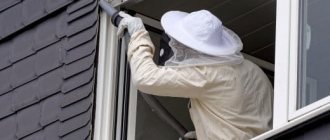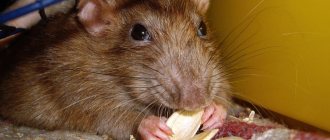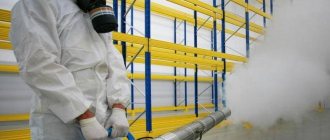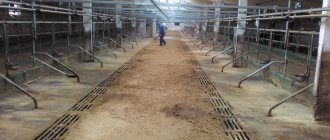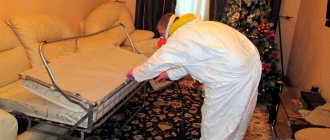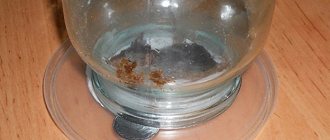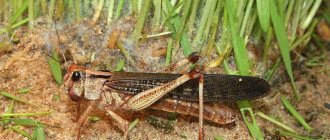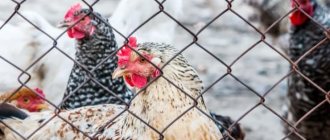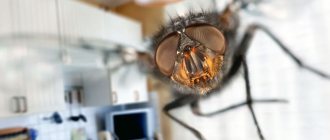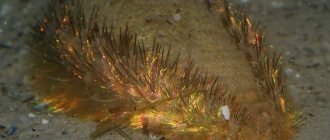Deratization is understood as a set of measures aimed at combating rodents harmful to humans - rats, mice, voles and other species, to ensure epidemiological safety and prevent economic damage.
Information on pest control processes is divided into chapters:
- How is deratization carried out in a house?
- How is deratization carried out at the enterprise?
- How is deratization of territories carried out?
- How to carry out pest control in an apartment?
- Features of deratization of public catering?
The problem of controlling rodents becomes especially acute at the end of the summer season, when the breeding individuals begin to look for a place for a cozy wintering, taking up residence in the basements of residential buildings, outbuildings, and various buildings on the territory of industrial enterprises and public catering establishments.
How is deratization carried out in a house?
Activities for deratization of private or apartment buildings are carried out by specialized organizations that have permission to provide such services, and above all, sanitary and epidemiological stations.
The whole complex consists of two types of work - preventive and exterminatory.
Preventive measures are carried out to prevent the appearance of rats and mice in the house, limiting their access to food and warm places to live. They include:
- glazing of basement windows;
- sealing holes and cracks through which rodents can enter basements, utility rooms or even living spaces;
- installing mesh on ventilation holes;
- high-quality sealing of food storage areas;
- installation of concrete floor screeds on the first floors of the house.
These works must be performed by home owners or management companies as part of the fight for the epidemiological and sanitary cleanliness of the housing stock.
At the first appearance of rodents, it is necessary to proceed to extermination measures. Deratization service specialists conduct preliminary inspections of the home, identifying:
- places where rodents most often appear;
- their movements in search of food;
- feeding places;
- approximate number of individuals.
This is necessary to determine the best, most effective method of exterminating gnawing parasites, the type and amount of poison used and where to install it.
When carrying out pest control at home, you need to consider:
- the presence of children to place poisons and baits in places inaccessible to them;
- presence of pets;
- simultaneously carrying out disinsection and disinfection in the presence of crawling insects.
Safety measures during procedures
Compliance with safety measures is extremely important. Otherwise, health problems cannot be avoided, and in some cases, deaths are possible.
It is necessary to strictly follow the instructions of the drug that is used and take precautions. The instructions may indicate:
- In what proportions should the drug be diluted?
- Destroy with the obligatory use of protective equipment: gloves, masks, respirators, goggles, etc.
- Use the product only with an open window or ventilate the room after treatment.
- Avoid contact with skin and mucous membranes. If problems arise, rinse with plenty of warm water.
- Requirement not to consume food or water during processing.
- Carry out the procedure only in a change of clothes and cover your head.
- Use a protective suit, etc.
For your information. It is also extremely important to combat rodents because they affect the epidemiological threshold. They are carriers of a large number of diseases.
You can destroy rodents once and for all if you choose the right means of combating them or a complex, and properly carry out deratization of the premises. The main thing is to take all precautions to avoid health problems.
How is deratization carried out at the enterprise?
The responsibility for carrying out the preventive part of deratization measures at enterprises rests with their management. In industrial and, especially, public premises of sanitary, hygienic and epidemiological importance, deratization should be carried out monthly, including extermination measures associated with the installation of baits and mechanical devices for catching rodents, as well as repelling them with ultrasound. The latter measure can only be used as a preventive measure, since it is ineffective in combating the invasion of rats and mice.
When deratization services are called to an enterprise, disinfection specialists carry out the following work:
- inspection of premises to determine the locations of the most frequent occurrence of rats and mice;
- setting traps for them;
- laying out poisoned bait;
- the use of poisons in the form of sprayed gases, gels, powders or liquids.
Various regulatory agencies (including Rospotrebnadzor) pay special attention to enterprises in the following areas of business:
- Food Industry;
- catering;
- educational institutions for preschool education, as well as schools and universities;
- hospitals and health centers;
- wholesale and retail trade enterprises;
- public utilities;
- warehouse complexes;
- premises of transport facilities.
At such enterprises, first of all, careful monitoring of the sanitary and epidemiological condition is carried out, and a plan for the elimination of dangerous pests is drawn up. Derotational extermination measures are carried out until the complete destruction of rats and mice, and preventive measures are prescribed. Rodents are considered completely destroyed if their appearance is not observed within 3 months.
Safe folk remedies
When working with poison, you should be careful.
When it is not possible to use professional deratization compounds, then folk methods come to the rescue:
- Bait with gypsum. This is perhaps the most famous trick for killing rats. The essence is to prepare a mixture of flour, granulated sugar, gypsum and vegetable oil. There are many options for proportions. This remedy works due to the fact that the rodent, after eating the sweet mass, dies soon because the plaster in its stomach hardens. The disadvantage of this remedy is that many consider this method of poisoning pests to be inhumane, because... the animal experiences great suffering as it dies. Therefore, for some, this is a last resort.
- Homemade glue traps. A kind of country method. The operating principle of such traps will be similar to those sold in stores. Making them is quite simple. On thick cardboard, plywood, chipboard, fiberboard, etc. Moment glue or some kind of super glue is applied. Bait is placed in the middle of this trap. The rodent will stick, will not be able to escape and will die.
- Scents that repel pests. This option is used in the form of herbs, essential oils (tansy, wormwood, elderberry, coriander, peppermint, wild rosemary). Mice also do not like the smell of ammonia mixed with vinegar. It is necessary to spread these herbs or liberally apply liquids in pest habitats.
- Other traps. A large number of devices can be made from scrap materials. You can use a bucket that is not completely filled with water. The structure is covered with a cardboard lid with a hole, and bait is placed in the center. The mouse, trying to get to the food, will fall into a bucket of water. Another popular method is using a bottle placed at an angle (neck up). The walls of the structure are lubricated from the inside with any oil. Bait is placed in the bottle. The mouse will slide inside and will no longer be able to get back out along the slippery walls.
How is deratization of territories carried out?
Rodents not only carry serious infectious diseases, posing a threat to the epidemiological situation, but also eat crops on agricultural lands, causing significant economic damage. Among these parasites are voles, moles and other types of rodents.
Signs of the presence of harmful rodents on the territory are:
- individuals caught in traps;
- eating poisoned and non-poisoned baits within 3 days of their placement;
- detection of burrows and underground passages;
- facts of damage to products and the containers in which they are located;
- identification of fresh excrement.
Deratization of territories can be carried out not only for agricultural, but also for urban lands, as part of the implementation of measures for systematic complete deratization. Usually, before the start of extermination work, a survey of the areas adjacent to residential buildings, agricultural and livestock complexes is carried out.
Methods of extermination in this case may be:
- placement of traps, at least 3 pieces per 100 m2 of area;
- pollination of rodent burrows and paths by poisons;
- laying out baits filled with poison;
- using animals such as cats to hunt rodents.
Important:
Only a specialist who understands the habits of animals can accurately determine their habitat, likely routes of movement and outline effective ways to destroy the overgrown population of rodents.
Other animals
| Earth dog | A small animal that runs the garden, making a large number of holes and passages there. |
| Mole | Underground rodents that are not particularly happy to eat vegetarian food, but spoil the garden and vegetable garden. |
| Mole rat | An active animal that eats tubers, roots and bulbs, makes underground passages. |
| The bats | Chiropterans that do not have aggression towards people, but breed dirt and are a source of stench. |
The selected articles describe in detail the methods of expelling these animals.
The land dog is a small, nimble and nimble rodent that causes a lot of harm to gardeners.
Moles are predators, but with their activity and way of life they spoil human plantings.
A large active animal that is not averse to feasting on all vegetative parts of plants.
Bats are harmless in themselves, but they make a lot of noise and cause unsanitary conditions.
How to carry out pest control in an apartment?
Unfortunately, separate housing in an apartment building is not absolutely protected from the penetration of rats and mice. And if, when the apartment is located on the ground floor, unpleasant and dangerous visitors are somehow explained by the proximity to the basement and the garbage chute chamber, then their appearance on higher floors is a complete surprise for many apartment owners.
Mice and even rats can enter apartments located on any floor, since they can breed not only in basements, but also in the attics of buildings. Therefore, an important stage in the fight against rodents in an apartment is preventive measures aimed at creating a barrier to the penetration of rats and mice into the apartment. To do this you should:
- install fine mesh grilles on the ventilation openings in the bathroom and kitchen of each apartment;
- do not leave the garbage chute hatch open on the site;
- seal cracks and holes in walls, niches and ceilings through which rodents can enter your home from the attic or from neighbors who do not adhere to safety precautions.
If, however, a rat, mouse or traces of their presence were noticed in your apartment, you should take care of exterminating the pest. For apartments, the most common methods of extermination deratization are:
- placement of mechanical traps;
- decomposition of baits with poison in places inaccessible to children and pets;
- use of ultrasonic repellers;
- the use of protective deratization systems using electric current.
A company that deals with rodent extermination
When faced with this scourge, not everyone knows who to turn to for help and who can carry out deratization. Today there are many organizations that exterminate pests. Medical deratization can also be carried out by employees of our Sanitary and Epidemiological Station.
Our company’s specialists are qualified and trained to carry out deratization work, since rodent control is a very responsible and serious task that requires certain knowledge, skills and professionalism.
A team of our certified professionals will cope with their task flawlessly - you don’t have to worry about the result of the work performed. The main thing is to choose a conscientious and well-established company - that is, ours.
Specialists are equipped with everything necessary: special protective suits, deratization bait containers, monitoring stations, traps, the most effective poisons that will ensure a safe and high-quality result. And most importantly, the employees of our deratization service guarantee the maximum level of rodent destruction.
You can calculate the prices for deratization - by contacting our center, you will be provided with a price list for the services.
| Room area | Not food (infested with rodents) | Non-edible (not inhabited by rodents) | Food (inhabited by rodents) | Food grade (not inhabited by rodents) |
| up to 50 sq.m. | from 2500 | from 2000 | from 2500 | from 2500 |
| from 50 to 100 sq.m. | 35 rub.sq.m. | 30 rub. sq.m. | 40 rub. sq.m. | 35 rub. sq.m. |
| from 100 to 300 sq.m. | 32 rub. sq.m. | 25 rub. sq.m. | 35 rub.sq.m. | 32 rub. sq.m. |
| from 300 to 500 sq.m. | 27 rub. sq.m. | 22 rub. sq.m. | 30 rub. sq.m. | 28 rub. sq.m. |
| from 500 to 800 sq.m. | 22 rub. sq.m. | 20 rub. sq.m. | 28 rub. sq.m. | 25 rub. sq.m. |
| from 800 to 1000 sq.m. | 15 rub. sq.m. | 12 rub. sq.m. | 18 rub. sq.m. | 18 rub. sq.m. |
| More than 1000 sq.m. | negotiable |
Features of public catering pest control
Rats and mice not only eat food in cafes and restaurants, but can also become a source of serious diseases for visitors to establishments, which carries the threat of epidemics.
For public catering establishments, deratization is a mandatory monthly event, and inspection for the presence of rodents during the year from April to October is carried out twice a month.
Similar to the fight against rodents at other facilities, deratization of public catering includes preventive and exterminatory measures. Preventative work includes:
- compliance with food storage rules;
- covering doors with iron or installing metal ones in rooms where products are stored;
- timely disposal of waste or its proper storage;
- regularly maintaining cleanliness in the kitchen work areas;
- sealing holes in walls, floors and ventilation systems.
Only specialized services are used to exterminate rats and mice. It is permissible to use any poisons and chemicals, except biological agents. We recommend contacting our company (see contacts)
Pest control.
Disinsection is usually carried out in areas where there are a lot of flies, bedbugs, ticks, mosquitoes, lice, fleas and other insects.
To combat adult insects and their embryos, use:
- 0.5-1% aqueous solution of chlorophos,
- 0.5% aqueous emulsion of trichlorometaphos-3 at the rate of 50-150 ml/m2,
- 0.2% DDVF emulsion, 1% karbofos emulsion,
- 0.5% emulsion of methyl metaphos at the rate of 100 ml/m2.
The duration of the residual effect is from 5-7 to 22 days, however, DDVF has a 10-30 times stronger effect on flies than chlorophos, but its effect is shorter.
The main breeding ground for insects is manure storage facilities , so the surface of manure piles is treated:
- 5% creolin solution,
- 10% naphthalizol solution,
- bleach powder containing at least 25% active chlorine,
- 0.1% solution of trichlorometaphos-3 at the rate of 4-5 liters per 1 sq. m.
Germs are sometimes carried in manure and urine, so special care must be taken in cleaning and disposing of manure from sick animals. Typically, manure is disinfected by composting or biothermal treatment.
Since when composting manure, the height of the pile should be no more than 2 m, and the manure should be interspersed with a layer of earth or peat, with the biothermal method of disinfection, the pile is laid from one manure no more than 1.5 m high and 2.5 m wide.
When biothermal disinfection of manure, a layer of uncontaminated manure or straw 20-25 cm thick is laid down, then contaminated manure is laid in a cone to a height of up to 125 cm. The infected manure is covered with a layer of straw 15 cm thick on top, and a layer of earth 15-20 cm is laid on top of the straw. Manure folded into piles is gradually heated to 70-75°.
Biothermal treatment of manure.
Bacteriological studies of the Research Institute of Veterinary Sanitation have established that under such conditions:
- foot-and-mouth disease and Aujeszky's disease viruses died on the 5-9th day,
- pathogens of brucellosis,
- paratyphoid and swine erysipelas - after 22 days,
- Mycobacterium tuberculosis - after 29-30 days.
Manure obtained from animals suffering from anthrax, emphysematous carbuncle, glanders, infectious anemia, rabies, brodzot, paratuberculous enteritis and rinderpest is pre-moistened with a disinfectant solution and burned.
A few more healthy recipes
Soda is no less harmful to rats. You will need:
sodium bicarbonate – ½ cup; flour – ½ cup; granulated sugar - 1 cup.
Mix all components and place them in places where pests were found. Soda leads to gas formation in the intestines of rodents, which will cause death.
Animals also do not like products such as ash, vinegar, kerosene, and turpentine. Wormwood, wild rosemary or tansy are laid out next to rat holes. All this is also poison for rats.
Application of pesticides
You can remove rodents from a private home using pesticides; one of the most effective means is “Krysin”. This drug is freely available in specialized stores.
If we talk about how to get rid of rats forever, then this remedy is a wonderful solution. Once the animal swallows the poison, it will die within a few minutes. It would be ideal if the rodent managed to get out into the yard before dying. Otherwise, the corpse will give off an unpleasant odor, but it is quite difficult to detect a dead rat. Animals climb into risers, under the floor, into sewers and other places that are difficult for humans to reach.
To avoid such trouble, it is recommended to use other means: “Ratidom”, “Goliath”. They also give a 100% guarantee and effect, but act somewhat differently. The rodent begins to experience a lack of oxygen, and therefore tries to leave the room, end up on the street, where death will overtake it.
So, the listed remedies are the most convenient drugs to use against rats.
Don't you feel sorry for killing them? They are still alive...
Honestly? It's a pity. They are really alive, they are very smart, they behave very interestingly, they are very interesting to watch. But it’s one thing to have a rat that lives somewhere in a wild forest on an uninhabited Pacific island, and another thing to have a rat that craps and spoils food in a private home. The wild rat is necessary for the biocenosis in which it lives; it is part of it, connected by trophic links with many animals and plants. You can’t kill rats here and no one here is purposefully doing this.
Lynx plays with a caught wild rat
Rats in an urban landscape are pests and carriers of various diseases, often posing a direct danger to people - they can attack people, bite them, and infect them with infections. Plus, they spoil a colossal amount of food. And therefore, such rats must be killed in human housing, no matter how interesting and attractive they may seem.
Some aspects
Before you start destroying burrows, it is worth remembering that rats can chew through wood, sheets of plywood and even cement with their teeth. Parts made of soft metals such as zinc, copper or tin will not be an obstacle for them.
When filling holes, it is recommended to use sand-cement mixtures with the addition of broken glass.
Treating premises against rats is most often carried out using aeration. Here they use sulfur dioxide or carbon dioxide, but this technique is unacceptable for an apartment or private house.
What you need to know about traps
Deratization of rats can be carried out in the old and proven way, namely with the use of traps and traps. Such devices are convenient to use in places where rats have not yet settled en masse.
Some people, using available materials, make rat traps, traps and snares on their own. The easiest way is to make a glue trap. Glue is applied to cardboard or plastic in 4-6 cm strips, and food is placed between the strips. Trying to get a tasty morsel, the rodent will definitely stick. The rat will no longer be able to get out on his own. By the way, there are much more mechanical products made by industrial methods than homemade ones.
It is useful to know that homemade and professional products are united by one factor - safety for people and animals; such traps do not contain poison for rats. In order for rodents to become interested in tasty baits, treats must be laid out using gloves. Otherwise, the rats, sensing the human scent, will not go into the set trap.
